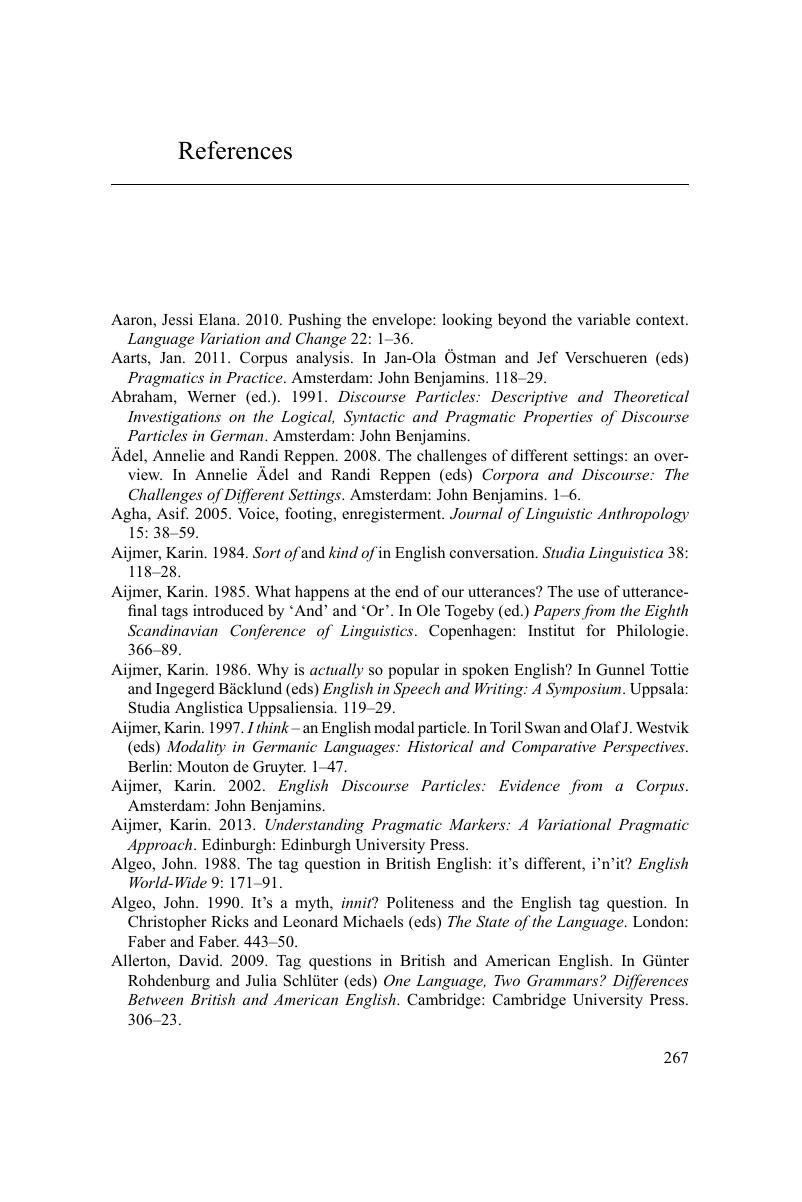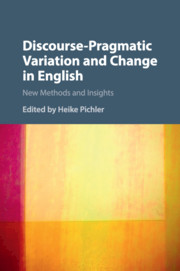Book contents
- Discourse-Pragmatic Variation and Change in English
- Discourse-Pragmatic Variation and Change in English
- Copyright page
- Contents
- Figures
- Tables
- Notes on editor and contributors
- Book part
- Glossary
- Introduction: discourse-pragmatic variation and change
- Part I Methods
- Part II Innovations
- Part III Change
- Part IV Variation
- Epilogue: the future of discourse-pragmatic variation and change research
- References
- Index
- References
References
Published online by Cambridge University Press: 05 May 2016
- Discourse-Pragmatic Variation and Change in English
- Discourse-Pragmatic Variation and Change in English
- Copyright page
- Contents
- Figures
- Tables
- Notes on editor and contributors
- Book part
- Glossary
- Introduction: discourse-pragmatic variation and change
- Part I Methods
- Part II Innovations
- Part III Change
- Part IV Variation
- Epilogue: the future of discourse-pragmatic variation and change research
- References
- Index
- References
Summary

- Type
- Chapter
- Information
- Discourse-Pragmatic Variation and Change in EnglishNew Methods and Insights, pp. 267 - 294Publisher: Cambridge University PressPrint publication year: 2016

